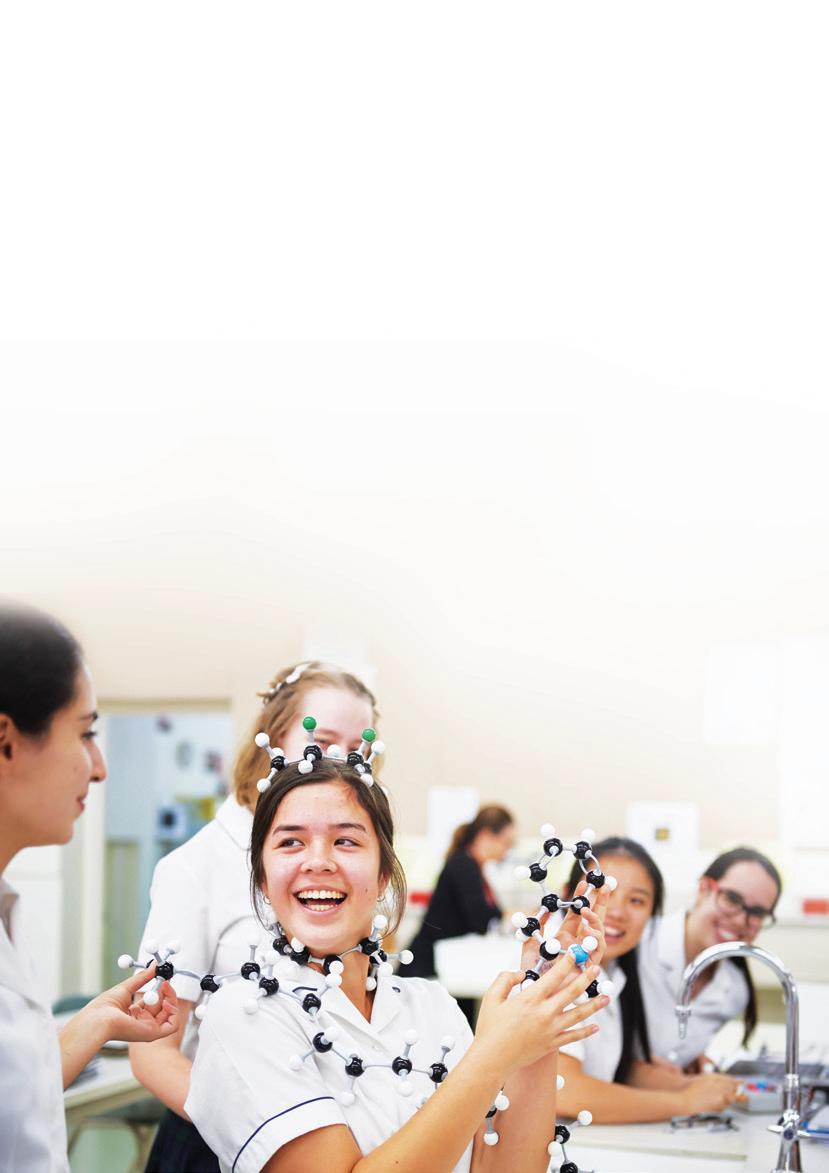
4 minute read
Developing a Curriculum to Achieve our Aims
PLC Sydney Towards 2030: Vision Statement and Strategic Directions
Before analysing how we will achieve each College aim, it is important to alert the community to our discussions regarding the curriculum providers.
Our learning virtues influence how we learn in our College. They impact the tone and quality of our interactions.
Seventy percent of the substance of our actual curriculum is set by the NSW Educational Standards Authority (NESA). All credentials in Australia need to fulfil the aims of the Australian Curriculum, Assessment and Reporting Authority (ACARA). NESA organise the Higher School Certificate and all of the curricula that lead up to it. Their courses fulfil the aims of ACARA. Other Internationallybased curricula such as the International Baccalaureate® (IB) and Cambridge International Assessments (Cambridge) are accepted as part of schooling in Australia only if they fulfil the standards set by ACARA. As an independent and Presbyterian school we can also set some of our own curriculum. This includes courses like Christian Studies, Philosophy and Theology (PaTh), Careers Education, Sport, Clubs, Assemblies, Chapels and sessions connected to student well-being (friendship development, drug and alcohol education etc). We currently offer the Higher School Certificate (HSC) for all students and NESA courses from Pre-K to Year 12. In order to add a degree of rigour and enrichment, we also offer Cambridge International General Certificate of Secondary Education (IGCSE) courses to Years 9 and 10.

The Higher School Certificate is a worthy credential in that: • It allows students to access any major university in the world • It tests on a broad base of knowledge, skills and understanding • It is culturally appropriate to Australia
• It is rigorous It is compulsory in NSW that we have students every year completing the HSC.
Like all credentials, the Higher School Certificate has limitations: • It is a ‘dot-point’ curriculum.
This can suggest to students that knowledge is a utility that helps them achieve goals and status rather than something to use to understand the universe and contribute towards it.
• The ATAR system provides a ‘rank order’ for each student which is specified to two decimal places.
It is not possible to rank students validly to such a degree, and the rank order is not the only means by which they should validly be able to show a university that they are fit to attain a particular course. Other options, like Cambridge International courses and the IB, have an advantage in that: • They are more open-ended about the nature of learning • They provide academic results that are less granular, yet which allow access to universities across the world
• They allow for more realistic final assessments. No student, for example, who scores an ATAR of 97.25 is reliably and validly better than a student who scores 97.10. It would be better to label each student A* students as
Cambridge does. PLC Sydney has chosen to integrate ‘A’ level studies, predominantly from Cambridge Assessment International Education (CAIE).
Cambridge courses align in two main ways with our vision of education for the future. 1. They allow easier access to a broader range of courses. • In 2017 to achieve entry, for example, into Medicine at Oxford
University requires Cambridge grades of A, A, A*. That is, marks of 80%, 80% and 90% in Cambridge examinations.
We estimate that this is within reach of at least 10% and possibly 20% of our students.
By way of comparison, entry into
Medicine at Sydney University using the ATAR requires a rank of 99.95. Only about 50 places are available across the state.
It is possible to enter Sydney
University currently with A*, A*,
A* grades in Cambridge. • NSW universities are currently reviewing Cambridge entry scores to align them with international standards. Macquarie University,
Wollongong University and UTS have already changed their entry scores to make them align with Oxford and Harvard (i.e., to allow easier entry). As we look towards 2030, we expect Sydney
University and UNSW to align themselves.

PLC Sydney Towards 2030: Vision Statement and Strategic Directions
2. The methodology for gaining university entry is changing. • In the United Kingdom and the
USA entry to university relies upon academic results and commitment to learning over time, engagement in service learning, and an interview. • In NSW the regime for many years has been that all university entry is determined by a set of marks. • Wollongong and Macquarie
Universities have already moved to more of a portfolio approach. They allow early entry and include interviews in many courses. 2018 was the first year that Sydney University explored some early entry options. • Whilst we cannot presume that
Sydney University and UNSW will shift to a portfolio approach, we do wish to prepare our students for the new world of university entry.

Thus, PLC Sydney has chosen NESA and Cambridge courses as part of a broader philosophy: • To assist students to achieve the best possible access to tertiary education • To prepare students for the growing emphasis on portfolios • Alongside our strong emphasis on public speaking, co-curricular breadth and service learning • As part of our PLC Sydney Futures program.
3. A key final element is time. The
Cambridge structure provides much more time for teachers to mentor students and for students not to feel stressed.
We want students to be ready for the future. Able to attend university anywhere. Academically prepared. Personally skilled. Having undertaken a range of challenging, engaging and interconnected courses.






